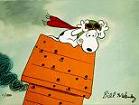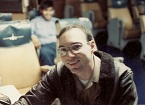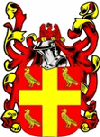treespider
Posts: 9796
Joined: 1/30/2005
From: Edgewater, MD
Status: offline

|
quote:
H-JAPAN
May 21, 2005
The book (Japan's Secret War) cites US National Archive sources, but simply as "NARA," as I
recall, with no identifying file numbers, making the notes completely
useless. Shortly after the hardcover edition came out I asked the
legendary John Taylor, chief of Modern Military at the Archives, and one
of the great resources in the field, what he knew of this. He said that if
I came across any material like it in my own research ( I was looking at
OSS X-2 (counterintelligence) in China and Japanese Intelligence at the
time), would I please bring it to his attention, as "nobody's been able to
find any of his sources." That was in 1990; and so far as I know, that is
still the situation. You can contact John Taylor at NARA for an update,
but I don't think anything has changed.
If you have access to JSTOR, the absence of any review would be revealing. My
own campus' connection is down at the moment; as soon as it's restored I'll
check it.
Henry Sirotin
Hunter College/C.W. Post
quote:
H-JAPAN
May 25, 2005
(1) From: "wgrund@bgnet.bgsu.edu" <wgrund@bgnet.bgsu.edu>
Here we go again.
I recall about ten years ago when Wilcox's book was reprinted that a
round of similar inquiries was floated on H-Japan. I had just returned
from a trip to DC where I was doing research for my dissertation on
this subject. This is a story that just won't die.
The bibliography in Wilcox's second edition provides a pretty good map
for primary and secondary sources in English on the subject. I was able
to find just about all the sources he used, with only a few exceptions.
To the best of my recollection, Wilcox never actually states that Japan
succeeded in building and testing a nuclear weapon, but he strongly
implies that they did.
After considerable research on the subject, both in the US and Japan, I
am firmly convinced that the Japanese did NOT succeed in testing (or
even building) a nuclear weapon. The Hungnam story likely began when
David Snell, a reporter for the Atlanta Constitution, wrote of his
encounter with a Japanese COUNTER-INTELLIGENCE officer after the war,
who alleged that Japanese scientists had tested a nuclear weapon off
the eastern coast of Korea. Wilcox rediscovered this article many years
ago when researching this subject. Apparently, however, he did not see
Snell's follow up article, where he all but retracted this story.
Nonetheless, Wilcox otherwise got a lot of the story correct, that
Japanese scientists were involved in nuclear research during the war.
Both the army and navy had comparatively small projects. But Wilcox
also neglected to include or account for much of the evidence that
would suggest that Japan DID NOT develop a nuclear weapon. This is
where his book, as work of professional scholarship and history, flies
off the rails. (And not because he isn't tenured somewhere.)
Furthermore, he introduces material referring to the atrocities of Unit
731, and the postwar cover-up, and by inference, suggests that facts
about Japan's nuclear research were similarly suppressed. This is
clearly not the case. Japanese scientists and others began to publish
articles about their wartime nuclear research activity as soon as the
US occupation ended. (The Japanese media had been prevented from
publishing anything about nuclear weapons and research, both US and
Japanese, by US occupation officials.) If you care to do the research,
you can find references to wartime nuclear research in Japan by
scientists, military officials, and historians (in Japanese) from as
early as 1946. But because Wilcox, and others, did not know of these
sources, it was as good as a conspiracy of silence.
I suspect we are seeing another round of interest in this subject
because we will be commemorating the 60th anniversary of the nuclear
attacks on Hiroshima and Nagasaki this year. We are certain to see
interest in this story emerge again in another ten years, fifteen, and
I suspect, in 2045. And so it goes…
As for Derek Price, he passed away several years ago. On the other
hand, I am happy to report that Eri Yagi is still very much alive and
enjoying her retirement teaching ballroom dancing (to the disabled no
less!)
For reviews of the Wilcox book, I recommend the following: John Dower's
Review of Robert Wilcox, Japan's Secret War, in Bulletin of Atomic
Scientists 43 (Aug.-Sept. 1986), 61-62; and Morris F. Low's, Japan's
Secret War? 'Instant' Scientific Manpower and Japan's World War II
Atomic Bomb Project, Annals of Science 47 (1990), 347-360.
On the Hungnam story, see Walter E. Grunden, Hungnam and the Japanese
Atomic Bomb: Recent Historiography of a Postwar Myth,”Intelligence and
National Security 13 (1998), 32-60.
For a brief, but accurate and scholarly account of Japan's wartime
nuclear research, John Dower's NI and F: Japan’s Wartime Atomic
Bomb Research, in Japan in War and Peace: Selected Essays (New York:
New Press, 1993), 55-100, is a good place to start.
For a more detailed account, see the chapters on science mobilization
and nuclear research in Walter E. Grunden, Secret Weapons & World War
II: Japan in the Shadow of Big Science (Lawrence: University Press of
Kansas, 2005), now available. Also, watch for a follow-up article in
Historia Scientiarum, co-authored by Masakatsu Yamazaki, Keiko-Nagase
Reimer, and Walter E. Grunden on this subject.
For a direct comparison of German and Japanese wartime nuclear research
efforts, see the article by Mark Walker, Masakatsu Yamazaki, and Walter
Grunden in the forthcoming issue of OSIRIS, available in July 2005.
Japanese scholars, such as Masakatsu Yamazaki and Yutaka Kawamura, have
been even busier researching and publishing on this subject, especially
from a more internalist perspective. For selected publications, see the
bibliography in my aforementioned monograph.
A documentary on Japan's wartime nuclear research is under production
by the History Channel and is scheduled for broadcast this summer.
I hope this overly long missive helps to clear up some confusion.
Most Sincerely,
Walter E. Grunden
Department of History
Bowling Green State University
_____________________________
Here's a link to: Treespider's Grand Campaign of DBB "It is not the critic who counts, .... The credit belongs to the man who is actually in the arena..." T. Roosevelt, Paris, 1910 |
 Printable Version
Printable Version

















 New Messages
New Messages No New Messages
No New Messages Hot Topic w/ New Messages
Hot Topic w/ New Messages Hot Topic w/o New Messages
Hot Topic w/o New Messages Locked w/ New Messages
Locked w/ New Messages Locked w/o New Messages
Locked w/o New Messages Post New Thread
Post New Thread